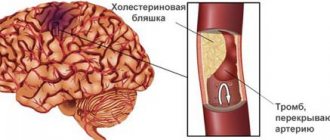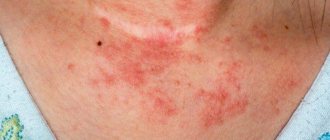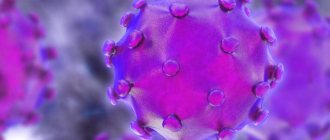Sexual diseases in women are serious pathologies, extremely dangerous with serious consequences in the absence of timely treatment. They are provoked by various microorganisms: viruses, bacteria, parasites, fungi. These are not only sexually transmitted diseases (gonorrhea, syphilis, etc.), but also infections of the genitourinary organs (chlamydia, candidiasis, etc.).
A feature of sexual diseases is the absence of clearly defined symptoms, which is why they are often called hidden. A woman may not even suspect that she is infected for a long time. Symptoms are determined by factors such as the type of infection, the degree of damage to the genitourinary system and the body as a whole. Therefore, the manifestation of symptoms of sexual diseases is very diverse.
Syphilis
The content of the article
Typically, syphilis in women appears 2-4 weeks after infection, sometimes this period is reduced to 9 days or extended to 6 months. Clinical manifestations are divided into 3 stages: primary, secondary and tertiary.
The disease begins with the formation of a syphilitic ulcer - a flat, compacted papule - at the site of penetration of the pathogen:
- on the mucous membrane of the vagina, labia;
- on the nipples of the mammary glands;
- on the oral mucosa;
- in the corners of the lips;
- on the skin of the face.
The formation is painless, so many women do not even suspect its appearance when it is located inside the vagina and hidden from view. For this reason, syphilis is often diagnosed only in the secondary period. Over time, the papule turns from a small formation measuring 1-3 mm into a round or oval red ulcer with a diameter of up to 2 cm.
It has a dense structure and is moist to the touch. In the center the ulcer is dirty yellow in color, which resembles a purulent mass.
Symptoms of primary syphilis:
- enlarged lymph nodes near the sites of syphilitic ulcers (pelvic, submandibular or axillary). This occurs 5-7 days after the formation of hard chancre. They are painless, mobile, and can reach the size of a walnut;
- general malaise of the body: increased body temperature, fever, pain in bones and joints, weakness;
- copious thick discharge with a pus-like consistency and an unpleasant odor, sometimes causing itching and burning;
- menstrual irregularity, characterized by unpleasant sensations during bleeding.
Only 3-4 weeks after the formation of syphilitic ulcers, the RW blood test shows a positive result.
How does infection occur?
The content of the article
Sexually transmitted diseases are a group of infections that can be transmitted through sexual contact: vaginal, oral or anal. In rare cases, infection occurs when using contaminated items - wet towels, sponges or intimate accessories.
Factors that increase the risk of contracting sexually transmitted diseases include having a large number of sexual partners, not using condoms, and substance abuse, which increases risky sexual behavior.
Refusal of condoms
It has been proven that people aged 15 to 24 years, with low financial status, living in large urban agglomerations, as well as homosexual men who do not remain in permanent relationships most often suffer from sexually transmitted diseases.
Symptoms of secondary syphilis
The development of the secondary stage begins 2 months after the formation of compacted papules. The following symptoms may be observed:
- general malaise: headache, tinnitus, dizziness, poor appetite, high body temperature (up to 380C), pain in bones and joints, insomnia, nausea, vomiting, confusion. Speech disturbances and epileptic seizures may occur;
- dysfunction of internal organs (in 25% of cases): damage to the myocardium, liver, stomach, kidneys, membranes and blood vessels of the brain;
- loss of hair, eyelashes and eyebrows. Hair growth resumes after 1-2 months;
- the appearance of condylomas on the genitals and in the anal area;
- the occurrence of rashes on the skin, including the palms and soles of the feet, and mucous membranes.
The following types of rash are distinguished:
- syphilitic roseola - pink or pale pink flat spots from 0.5 to 1 cm in diameter. Localization – trunk and limbs;
- lenticular syphilide - copper-red round formations with a dense structure, rising above the skin;
- meliary syphilide - small dense formations with a diameter of up to 2-2.5 mm. They are brown in color and localized on the skin of the body. As a rule, such papules accumulate and form rings, arcs or plaques;
- coin-shaped syphilide - large red or brown formations with a diameter of up to 2.5 cm, slightly raised above the skin;
- weeping syphilide - eroded formations. They are moist, round in shape, and cause moderate itching. Localization – groin area and axillary folds;
- Condylomas lata are soft, pale pink formations that rise above the skin and are similar in appearance to papillomas. Localization – perineum and area around the mouth;
- pustular syphilide - small purulent formations with a yellowish crust at the end. Localization - on the skin of the trunk, limbs and face.
Usually after 3-5 weeks the rashes suddenly disappear, leaving no trace, even if no treatment was carried out. This period is called secondary latent syphilis. This stage lasts up to 5 years. During this time, relapses of the disease are observed, the rash appears again, but later also disappears on its own.
The course of the first wave of rashes is pronounced: multiple skin lesions, formations of a bright shade. Subsequently, darker elements are observed, often accumulating in groups.
Symptoms of tertiary syphilis
This type of disease is diagnosed extremely rarely. It develops 4-5 years after infection and is characterized by damage to the skin, mucous membranes, bones and internal organs. Over time it leads to death.
The symptoms are as follows:
- the appearance of brown or red-brown plaques on the skin. They have an uneven outline, rise above the skin, and are covered with ulcers and crusts. Localization – arms, back, face;
- formation in the subcutaneous tissue of an isolated gumma - a hard node the size of a walnut and an ulcer in the center. It usually occurs on the scalp, chest, face, and sometimes on the mucous membranes of the mouth, larynx and nose. In the latter case, tissue destruction and deformation of the palate occurs. Against this background, a number of complications develop:
- the nasal septum is destroyed and the nose is deformed;
- hoarseness and hoarseness appear;
- tongue mobility is impaired.
- damage to the nervous, vascular and skeletal systems, which manifests itself in the form of syphilitic meningitis, hydrocephalus, progressive paralysis;
- deformation and dysfunction of internal organs (liver, kidneys, lungs, heart).
Diagnostics
It is almost impossible to determine hidden infections without the use of modern diagnostic methods. The attending physician will prescribe the necessary tests to detect infections. This could be a urologist or venereologist. Don’t be shy or hide any details; to achieve a positive treatment result, you need to trust the doctors. The specialists of the Global Clinic CM approach the identification of viruses with great professionalism. For laboratory analyses, only high-quality reagents are used. To identify viruses, the laboratory maintains the required temperature, which allows the type of male disease to be determined with the greatest accuracy.
The first signs of the disease
The first classic manifestation of gonorrhea is discharge. As a rule, they have a thick consistency, yellow or white color, an unpleasant odor, and cause itching. Against this background, women often mistake the disease for thrush or nonspecific colpitis, self-medicate and, thereby, erase the clinical picture.
Pain in the lower abdomen and when urinating may occur, and the urge to urinate may become more frequent. This is also often mistakenly blamed on cystitis or hypothermia.
Gonorrheal cervicitis
When the infection is localized in the vagina, the following symptoms are observed:
- yellowish-white discharge with an unpleasant odor;
- itching, burning and tickling sensation in the perineum and vagina;
- pain during intercourse.
In pregnant women, symptoms are more pronounced.
Inflammation of the appendages and uterus
When infection penetrates higher, the appendages and endometrium are affected. In this case it is observed:
- nagging or sharp cutting pain in the lower abdomen;
- purulent discharge mixed with blood;
- increase in body temperature to 38-390C;
- the appearance of signs of intoxication - weakness, malaise, nausea, vomiting, loss of appetite;
- pain during intercourse.
Urethritis, cystitis, pyelonephritis
When the urethra is infected, the symptoms are as follows:
- frequent urge to urinate;
- cutting pain and burning during urination;
- swelling and redness of the external opening of the urethra, its palpation is painful, purulent discharge from it is possible;
- the appearance of a false urge to urinate.
- Ascending infection affects the bladder and kidneys.
Gonorrheal proctitis
Gonorrheal inflammation of the rectum causes:
- itching and burning in the anal area;
- mucopurulent discharge;
- painful bowel movements;
- false urge to defecate;
- bloody streaks in stool and discharge;
- purulent plaque on the rectal mucosa;
- redness of the anus;
- filling the folds of the anus with pus.
Gonorrheal pharyngitis
Usually hidden under the guise of an ordinary sore throat with characteristic symptoms:
- sore throat (rarely intense);
- pain when swallowing;
- enlargement of the submandibular lymph nodes;
- increased body temperature;
- swelling and redness of the tonsils and palatine arches, the appearance of a yellowish-gray coating on them.
However, most often gonorrheal pharyngitis is asymptomatic or manifests itself only as a sore throat and hoarseness.
Gonorrheal stomatitis
It is characterized by the following symptoms:
- inflammation of the gums with the formation of purulent ulcers;
- enlargement of the submandibular lymph nodes.
Gonorrheal conjunctivitis
Infection of the mucous membrane of the eyes causes vivid symptoms:
- swelling of the eyelids, which are literally glued together with purulent discharge;
- redness of the mucous membrane of the eyes;
- in advanced cases - clouding of the cornea and blurred vision.
Chronic gonorrhea
2 months after infection, gonorrhea takes on a chronic form, the clinical picture of which is almost erased. Asymptomatic periods of the disease are replaced by relapses with mild symptoms.
The trigger for an exacerbation can be hypothermia, the onset of menstruation, or termination of pregnancy. Symptoms include discharge and pain in the lumbar region, sometimes spasms can radiate to the legs or abdomen.
Chronic inflammation of the vaginal mucosa due to gonorrhea leads to menstrual irregularities. Bleeding is observed between menstruation, and the cycle itself becomes long and with heavy bleeding. As the disease progresses, adhesions develop in the pelvis.
A distinctive symptom of gonorrhea at this stage is the “morning drop” syndrome: when waking up, a woman may find a cloudy purulent drop at the opening of the urethra.
If left untreated, chronic gonorrhea can lead to infertility.
Trichomoniasis
The incubation period of the disease is 4-14 days, the first signs appear approximately 5 days after infection. Symptoms of trichomoniasis depend on the site of infection (vagina, urethra, and cervix).
Symptoms of “primary” trichomoniasis:
- copious discharge of leucorrhoea from the vagina. They are usually yellowish or greenish in color (may turn gray-green with blood streaks), foaming, and having an unpleasant odor. When combined with gardnerellosis (bacterial vaginosis), a “fishy” odor appears;
- the vaginal mucosa is covered with purulent discharge;
- vaginal discharge upon contact with the skin causes ulcers, irritations and abrasions to appear on it;
- discomfort and pain during sexual intercourse;
- burning and severe itching in the vagina, swelling and redness;
- intermenstrual bleeding from the vagina;
- when the urethra is affected by an infection, frequent urination, burning and cutting pain are observed;
- increase in body temperature to 37.50C;
- general deterioration of health, sleep disturbance;
- rarely – pain in the lower abdomen.
Chlamydia
Chlamydia is an insidious disease, since in 6% of cases it is asymptomatic, which does not mean safety. The incubation period is 2-4 weeks, after which symptoms may appear:
- itching and burning on the genital mucosa;
- white or yellowish mucopurulent discharge with a sharp, unpleasant odor;
- increase in body temperature to 37-37.50C;
- minor or intense pain in the lower abdomen, in the lumbar and groin areas, intensifying before menstruation, with sudden movements and physical activity;
- when the mucous membrane of the urethral canal is infected: frequent urination, pain, itching and burning during urination, cloudy urine;
- discomfort and pain during sexual intercourse;
- slight bleeding during or after sexual intercourse;
- erosion of the cervix, small ulcerations on it and spotting;
- in advanced cases - a violation of the endocrine function of the ovaries and the ovarian-menstrual cycle, as a result of which menstruation becomes irregular, painful, rare, abundant or, conversely, scanty.
Often, with a long asymptomatic course, the only sign of the disease is infertility.
Actinomycosis
This disease is quite rare. At the initial stage, the symptoms of actinomycosis are mild and often resemble an inflammatory process.
Observed:
- increase in body temperature up to 400C;
- sharp or aching pain in the lower abdomen and iliac region.
As the disease progresses, dense, painless infiltrates form. All pelvic organs are involved in this process, deformation changes occur in the uterus, appendages, intestines, rectum with hyperemia of the mucous membrane and smoothness of the vascular pattern. Large dense infiltrates can compress the intestines and disrupt the functions of the urinary tract.
At the next stage of the disease the following is observed:
- the formation of fistulas with purulent discharge, spreading to the retroperitoneal tissue, bladder, thigh and rectum. In this case, the secreted pus has no odor;
- disturbances of menstrual (acyclic bleeding, absence of menstruation) and reproductive function.
In the chronic form of the disease, adhesions and scars appear.
AIDS
AIDS is the final stage of infection with the human immunodeficiency virus (HIV). At the initial stage, the disease has no symptoms and can remain hidden for up to 10 years. Only at a late stage does AIDS cause an outbreak of diseases such as pneumonia, tuberculosis, and cancer.
The most common cause of infection is sexual contact. Infection can also occur through blood (for example, when using unsterile medical instruments) and during childbirth, when the mother infects her newborn baby.
People who have sex with multiple partners should be tested regularly for HIV, as the absence of symptoms can lead to unwitting infection of others.
Mycoplasmosis
In 10-20% of cases, this disease is asymptomatic until it is activated by various stress factors: abortion, hypothermia, nervous strain, etc. The incubation period ranges from 5 days to 2 months, with the first signs appearing approximately 7-14 days after infection.
Mycoplasmosis does not have clearly defined specific symptoms; they depend on the clinical form of the disease. The pathology can occur in the form of vulvovaginitis, cervicitis, endometritis, salpingitis, oophoritis, adnexitis, urethritis, cystitis, pyelonephritis.
The following clinical picture is observed:
- if the vagina and cervix are affected: yellow or gray mucous discharge, itching and burning during urination, discomfort and pain during or after sexual intercourse;
- with damage to the uterus and appendages: nagging pain in the lower abdomen and lower back, intermenstrual bleeding, menstrual irregularities;
- when the urethra is infected: frequent urination, pain and burning during it, false urge to urinate, increased body temperature up to 38.50C, cutting pain in the lower abdomen, pain in the lower back;
- with intestinal damage: pain during defecation, false urge to defecate, sometimes - an admixture of mucus in the stool;
- if the respiratory system is affected (does not apply to sexual diseases, but can become a complication of genital mycoplasmosis): sore throat, nasal congestion, inflammation of the ligaments, bronchitis, fever, weakness, sweating, long-lasting cough with sputum.
Ureaplasmosis
In 70-80% of cases, there are no clinical manifestations of this disease, therefore, as a rule, it is detected during the diagnosis of another disease. Ureaplasmosis has no specific symptoms and during periods of exacerbation it manifests itself as an inflammatory process. The incubation period can last from several days to several months.
The symptoms of the disease are as follows:
- urethritis (inflammation of the urethra): pain and burning in the urethral area, while the pain increases sharply when urinating, inflammation of the mucous membrane of the external urethral os, frequent urination;
- mucous discharge from the vagina and urethra. They are usually quite scanty, odorless and colorless. If the inflammatory process has already started, the discharge may become greenish or yellowish and take on a sharp, unpleasant odor;
- painful and uncomfortable sensations during and after sexual intercourse;
- bloody discharge from the vagina after sexual intercourse;
- aching or nagging pain in the lower abdomen. If the disease has caused complications in the appendages and uterus - pain in the lower abdomen of a cutting nature;
- in acute form: increase in body temperature to 37-37.50C; weakness, fatigue, decreased performance;
- in the chronic form: infertility, spontaneous miscarriage, pathological course of pregnancy, treatment-resistant urethritis, vaginitis, endocervicitis, adnexitis.
If the infection occurs during oral sex, ureaplasmosis can be hidden under the “mask” of a sore throat: plaque appears on the tonsils (tonsils), painful sensations in the throat, it is difficult and painful to swallow, etc.
GONORRHOEA is a well-known enemy!
Gonorrhea is a well-studied bacterium, which is generally good for diagnosis, prevention, and treatment. The only route of infection is sexual contact.
Symptoms
The first signs appear already on the 3-5th day, but their appearance may be delayed for 2-3 weeks. The symptoms of the disease are still the same – severe urethritis.
Treatment
Gonorrhea should be treated without fail. Recently, the bacterium cannot always be detected, since it lives not only in the urethra, but also in other organs located in close proximity, for example, in the prostate gland. Gonorrhea often penetrates into blood cells - into leukocytes, and in each new habitat it still continues to multiply.
How to detect gonorrhea?
The simplest diagnostic method is smear microscopy, which allows us to draw the appropriate conclusions.
How to treat?
Therapy is carried out exclusively with antibiotics, but only a doctor should prescribe them. The fact is that the gonorrhea bacterium can degenerate into the L-form, and then it is almost impossible to get rid of the infection. That is why the issue of timely treatment is especially acute, and if you know about the likelihood of the disease, it is better to get tested and not wait for negative consequences.
Gardnerellosis
The incubation period of the disease is 4-10 days. The first signs of infection are:
- the appearance of a “rotten fish” smell from the vagina. This specific odor is caused by the breakdown of waste products of the infection;
- slight whitish-gray or yellowish vaginal discharge.
- With the development of the disease, the clinical picture is supplemented by symptoms:
- feeling of irritation, itching and burning in the vagina;
- frequent urination;
- pain in the lower abdomen, which indicates an increase in the inflammatory process;
- increasing discomfort and pain during sexual intercourse;
- creamy discharge flowing down the walls of the vagina into the perineum.
After sexual intercourse, the symptoms become more pronounced, since sperm, having an alkaline reaction, serves as a favorable environment for the proliferation of gardnerella bacteria.
Candidiasis (thrush)
The first signs of candidiasis (thrush) appear already 4-5 days after infection or activation of the vagina’s own opportunistic microflora. The clinical picture of this disease is as follows:
- pain and discomfort during sexual intercourse: the vaginal mucosa is destroyed by Candida fungi, becoming inflamed and painful;
- burning and itching in the genital area. These symptoms are worse after urinating or washing;
- swelling and redness of the genitals;
- white coating and copious “curdled” discharge with an unpleasant sour odor. The discharge is mucus with many white dense lumps (a type of curdled mass or curdled milk);
- pain and discomfort when urinating;
- the appearance of a rash on the labia. With thrush, the formation of small burgundy pimples-vesicles with liquid contents inside - vesicles - is often observed. After 1-2 days they burst and small erosions and crusts form in their place;
- general deterioration of condition. The listed symptoms cause nervousness, attacks of bad mood, and sleep disturbances (the burning sensation intensifies at night). Their manifestation is especially intensified after a long walk and during menstruation.
Molluscum contagiosum
Molluscum contagiosum is caused by the smallpox virus Poxviridae. In adults, it is most often transmitted sexually, less often through contact with infected objects. A characteristic symptom of this disease is the appearance of hard, translucent bulges of flesh-colored, pearl or yellow color, which are filled with a porous substance inside.
In men, the lesions are located on the penis, and in women - on the pubic mounds, labia, groin, and around the anus.
Lesions around the anus
Molluscum contagiosum is not dangerous and, as a rule, the changes caused by it disappear spontaneously after a few months. However, to avoid complications, treatment is recommended. The gynecologist and urologist prescribe special ointments and oral medications. Large lesions are excised using a laser or electric knife.
Human papillomavirus (HPV)
The forms of manifestation of the papilloma virus in women are different: genital warts, flat warts, dysplasia, bowenoid papulosis, precancerous condition and cervical cancer. Usually, papillomavirus occurs latently and is detected during a routine examination. Pathological changes in the skin are usually detected 1–6 months after infection.
The incubation period and the main manifestations of symptoms depend on the type of papillomavirus, its quantity (viral load), immune activity and concomitant diseases (sexually transmitted infections).
The following are the main symptoms of HPV in women:
| Symptom | Condylomas acuminata | Dysplasia | Cervical cancer |
| Pain in the lower back, lower limbs and pelvis | No | No | Eat |
| Intermenstrual bleeding | No | Eat | Eat |
| Minor bleeding after intercourse | Eat | Eat | Eat |
| Discharge | Transparent or yellowish-green color with an unpleasant odor | With an unpleasant odor | With an unpleasant odor |
| Itching and burning in the genital area | Eat | Eat | Eat |
| Pain during and after intercourse | Eat | Eat | Eat |
The clinical picture can be supplemented by general signs:
- chronic fatigue;
- periodic weight loss;
- decreased appetite;
- swelling of the lower extremities.
Chancroid
Venereal ulcers, also known as soft ulcers, are more common in men than women. The cause of formation is the bacteria Haemophilus ducreyi. The main symptom of the disease is a painful ulceration on the genitals, which looks like a lentil grain with a bright red border. The disease is accompanied by swollen lymph nodes.
Peptic ulcer infection is rare in developed Europe; it is more often diagnosed in developing countries, and, alas, in Russia.
Herpes infection (cytomegalovirus, herpes simplex)
Primary herpes
Primary herpes occurs in 5 periods:
- Incubation . Lasts from 2 to 14 days, there are no symptoms;
- Prodromal . General and local manifestations increase: malaise, muscle pain, accompanied by swelling and weakness, increased body temperature to 37-37.50C, possible chills, enlarged inguinal lymph nodes. There is also itching and burning in the genital area, leucorrhoea, painful urination with pain and burning;
- Rash period . The duration of the period is from 7 to 10 days. The appearance on the vaginal mucosa of rashes in the form of bubbles with a diameter of 2-3 mm with liquid contents - vesicles. They accumulate in groups, forming a painful, itchy area. Periodically, the number of rashes increases. General symptoms are mild, local manifestations in the form of itching, burning, swelling and pain persist. They lead to nervousness, attacks of bad mood, sleep disturbances;
- Stabilization period . Lasts about 2-3 weeks. At this stage, the vesicles become cloudy, open and form weeping erosions that are prone to fusion. Sometimes ulcers up to 1 mm deep appear in their place. The affected areas are painful, purulent plaque is possible, there is no bleeding;
- Healing period . Lasts about 2-3 weeks. Local and general symptoms subside. The affected areas dry out, a thin crust forms, under which a new epithelium forms. After a while, the crust disappears, and in its place there is redness, which goes away after complete healing.
The rash is usually localized near the external opening of the urethra, at the vaginal opening, on the labia, on the cervix, in the anus or buttocks.
The total duration of primary herpes is 5-7 weeks.
Recurrent herpes
Recurrent herpes can occur in typical and atypical forms. The typical form is characterized by the same symptoms as primary herpes. Only the total duration is 7-10 days.
The atypical form can be presented in various ways:
| Option | Predominant symptoms |
| Hydropic | Diffuse swelling and redness of the vulva |
| Itchy | The appearance of deep, poorly healing cracks, severe itching of the vaginal mucosa |
| Abortive | Absence of some stages of the disease, regression of rashes in 2-3 days |
| Subclinical | Presence of microsymptoms (itching, superficial cracks) or absence of clinical manifestations |
Transmission routes
The main route of transmission of sexually transmitted diseases is sexual. There are several important aspects to consider:
- Transmission of infection is possible through any type of sex. The greatest likelihood of infection occurs through oral-sexual contact.
- Sharing different sex toys significantly increases the risk of infection.
- The likelihood of infection increases if personal hygiene rules are not followed before and after sex.
- The causative agent of the disease can be in semen, on mucous membranes, in saliva, in blood (less often in urine). Transmission of infection in rare cases is also possible through a kiss.
- Most pathogenic microorganisms are not stable in the external environment, but this does not completely exclude contact and household transmission. You can become infected through shared towels or linen, when visiting a sauna, bathhouse, or swimming pool.






